I am developing an android application to calculate position based on Sensor's Data
Accelerometer --> Calculate Linear Acceleration
Magnetometer + Accelerometer --> Direction of movement
The initial position will be taken from GPS (Latitude + Longitude).
Now based on Sensor's Readings i need to calculate the new position of the Smartphone:
My Algorithm is following - (But is not calculating Accurate Position): Please help me improve it.
Note: My algorithm Code is in C# (I am sending Sensor Data to Server - Where Data is stored in the Database. I am calculating the position on Server)
All DateTime Objects have been calculated using TimeStamps - From 01-01-1970
var prevLocation = ServerHandler.getLatestPosition(IMEI);
var newLocation = new ReceivedDataDTO()
{
LocationDataDto = new LocationDataDTO(),
UsersDto = new UsersDTO(),
DeviceDto = new DeviceDTO(),
SensorDataDto = new SensorDataDTO()
};
//First Reading
if (prevLocation.Latitude == null)
{
//Save GPS Readings
newLocation.LocationDataDto.DeviceId = ServerHandler.GetDeviceIdByIMEI(IMEI);
newLocation.LocationDataDto.Latitude = Latitude;
newLocation.LocationDataDto.Longitude = Longitude;
newLocation.LocationDataDto.Acceleration = float.Parse(currentAcceleration);
newLocation.LocationDataDto.Direction = float.Parse(currentDirection);
newLocation.LocationDataDto.Speed = (float) 0.0;
newLocation.LocationDataDto.ReadingDateTime = date;
newLocation.DeviceDto.IMEI = IMEI;
// saving to database
ServerHandler.SaveReceivedData(newLocation);
return;
}
//If Previous Position not NULL --> Calculate New Position
**//Algorithm Starts HERE**
var oldLatitude = Double.Parse(prevLocation.Latitude);
var oldLongitude = Double.Parse(prevLocation.Longitude);
var direction = Double.Parse(currentDirection);
Double initialVelocity = prevLocation.Speed;
//Get Current Time to calculate time Travelling - In seconds
var secondsTravelling = date - tripStartTime;
var t = secondsTravelling.TotalSeconds;
//Calculate Distance using physice formula, s= Vi * t + 0.5 * a * t^2
// distanceTravelled = initialVelocity * timeTravelling + 0.5 * currentAcceleration * timeTravelling * timeTravelling;
var distanceTravelled = initialVelocity * t + 0.5 * Double.Parse(currentAcceleration) * t * t;
//Calculate the Final Velocity/ Speed of the device.
// this Final Velocity is the Initil Velocity of the next reading
//Physics Formula: Vf = Vi + a * t
var finalvelocity = initialVelocity + Double.Parse(currentAcceleration) * t;
//Convert from Degree to Radians (For Formula)
oldLatitude = Math.PI * oldLatitude / 180;
oldLongitude = Math.PI * oldLongitude / 180;
direction = Math.PI * direction / 180.0;
//Calculate the New Longitude and Latitude
var newLatitude = Math.Asin(Math.Sin(oldLatitude) * Math.Cos(distanceTravelled / earthRadius) + Math.Cos(oldLatitude) * Math.Sin(distanceTravelled / earthRadius) * Math.Cos(direction));
var newLongitude = oldLongitude + Math.Atan2(Math.Sin(direction) * Math.Sin(distanceTravelled / earthRadius) * Math.Cos(oldLatitude), Math.Cos(distanceTravelled / earthRadius) - Math.Sin(oldLatitude) * Math.Sin(newLatitude));
//Convert From Radian to degree/Decimal
newLatitude = 180 * newLatitude / Math.PI;
newLongitude = 180 * newLongitude / Math.PI;
This is the Result I get --> Phone was not moving. As you can see speed is 27.3263111114502 So there is something wrong in calculating Speed but I don't know what

ANSWER:
I found a solution to calculate position based on Sensor: I have posted an Answer below.
If you need any help, please leave a comment
this is The results compared to GPS (Note: GPS is in Red)

